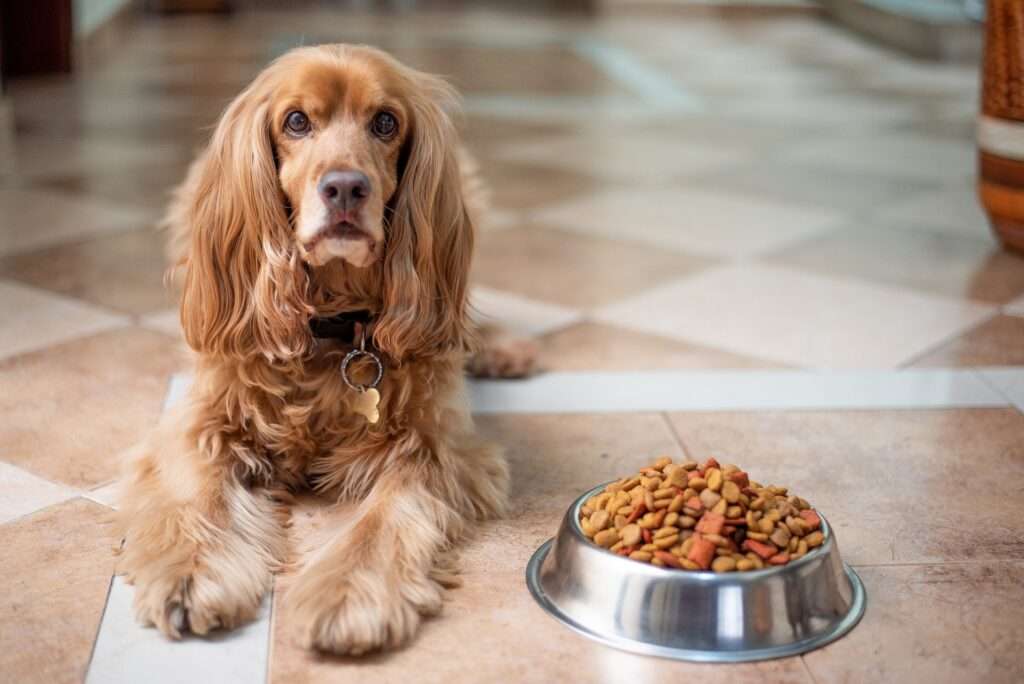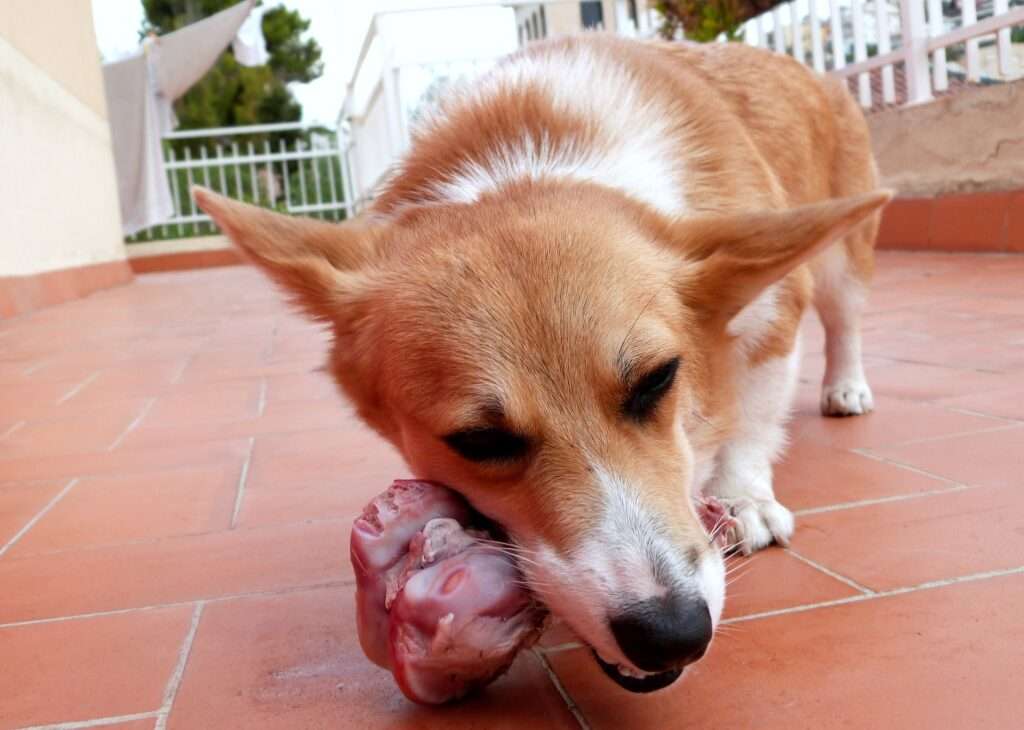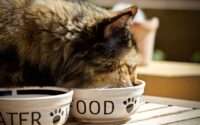What Can I Feed My Dog Instead of Dog Food? Going Beyond the Kibble
When it comes to nourishing your furry friend, the choices can feel overwhelming. As a dedicated pet parent, you’re on a mission to provide the best care possible, and that starts with a balanced and nutritious diet. While commercial dog food may be the go-to choice, did you know that there’s a world of alternative options waiting to be explored?
In this article, we’ll introduce you to a range of alternatives that can add variety and enhance your dog’s mealtime experience. From homemade delights to specialized options, we’ll dive into the advantages and disadvantages of each alternative, empowering you to make informed decisions about your pet’s nutrition.
So, fasten your seatbelt and join us on a journey of discovery as we explore the wonderful world of dog food alternatives. Your furry friend’s well-being is our top priority, and we’re here to guide you every step of the way. Get ready to unlock a whole new world of nourishment that will leave your pup wagging their tail with delight!
The Drawbacks of Commercial Dog Food

Commercial dog food, although convenient and widely available, may not always be the healthiest choice for your beloved canine companion. It’s important to be aware of the potential drawbacks associated with commercial dog food to make an informed decision about your dog’s diet.
- Questionable Ingredients: Many commercial dog food brands include fillers, preservatives, and artificial additives. These ingredients serve to bulk up the food, extend its shelf life, or enhance its taste, but they offer little nutritional value. Low-quality fillers can be difficult for dogs to digest and may contribute to digestive problems or allergies.
- Lack of Transparency: Some commercial dog food manufacturers prioritize profit over quality, using inexpensive ingredients that may not be optimal for your dog’s health. Additionally, the specific sourcing and quality of ingredients may not be clearly disclosed, making it difficult to assess the nutritional value and safety of the food.
- Nutritional Imbalances: While commercial dog food is formulated to meet basic nutritional requirements, not all products are created equal. Some may lack essential nutrients or contain inadequate amounts of key vitamins, minerals, and fatty acids. This can lead to deficiencies or imbalances, potentially affecting your dog’s overall health and vitality.
- Processing Methods: The high-temperature processing methods used in the production of commercial dog food can cause nutrient degradation. Heat-sensitive vitamins and enzymes may be lost during manufacturing, reducing the overall nutritional value of the food.
- Overprocessing and Overcooking: Commercial dog food often undergoes extensive processing, including excessive cooking and rendering, to ensure long shelf life and remove potential pathogens. Unfortunately, this can diminish the nutritional content and natural flavors of the ingredients.
It’s important to note that not all commercial dog food brands are created equal. Some manufacturers prioritize quality ingredients and strive to offer balanced nutrition. It’s worthwhile to research and select reputable brands that prioritize your dog’s well-being.
Exploring alternative options to commercial dog food can help address these concerns and promote a healthier lifestyle for your dog. Let’s delve into some alternatives that you can consider to provide a nutritious and tailored diet for your beloved pet.
Alternative Options to Commercial Dog Food
When it comes to nourishing your canine companion, exploring alternative options to commercial dog food can provide a fresh and nutritious approach. Here are a few alternatives to consider, keeping in mind that each option requires careful planning and consultation with a veterinarian or canine nutritionist.
- Homemade Diets: Creating homemade meals for your dog allows you to have full control over their diet. By using quality ingredients like lean meats, vegetables, and grains, you can provide a balanced and personalized meal plan. However, it’s crucial to work with a professional to ensure that your homemade recipes meet your dog’s specific nutritional needs.
- Raw Food Diets: Raw food diets emphasize feeding your dog uncooked meats, bones, fruits, and vegetables. Advocates argue that this approach aligns with a dog’s natural carnivorous tendencies. However, it’s essential to research and understand the potential risks associated with raw feeding, such as bacterial contamination. Consult with a veterinarian to evaluate if a raw food diet is appropriate for your dog and to receive guidance on safe food handling practices.
- Commercial Raw Diets: If you’re interested in a raw food diet but prefer a more convenient option, consider commercially prepared raw food. These diets are formulated to meet your dog’s nutritional needs while providing the benefits of a raw food approach. Look for reputable brands that prioritize high-quality ingredients and have undergone rigorous testing for safety.
- Cooked Commercial Diets: Cooked commercial dog food offers a convenient alternative to raw or homemade diets. These diets typically feature high-quality ingredients and undergo cooking processes that help ensure safety while retaining essential nutrients. Look for reputable brands that use human-grade ingredients and meet nutritional standards established by organizations like the Association of American Feed Control Officials (AAFCO).
- Grain-Free or Limited Ingredient Diets: If your dog has specific dietary sensitivities or allergies, grain-free or limited ingredient diets may be suitable options. These diets often focus on novel protein sources and alternative carbohydrates to minimize potential allergens. However, it’s essential to consult with a veterinarian to determine if a specific dietary restriction is necessary for your dog and to ensure the chosen diet remains nutritionally balanced.
Remember, regardless of the alternative diet you choose, it’s vital to work closely with a veterinarian or a canine nutritionist. They can help tailor a diet plan to your dog’s individual needs, provide guidance on portion sizes, monitor their health, and make any necessary adjustments along the way. Consider these alternative options as a way to provide a personalized approach to your dog’s nutrition and overall well-being.
Delicious Homemade Dog Food Recipes
Preparing homemade meals for your furry friend can be a rewarding experience, ensuring they receive a nutritious and flavorful diet. Here are a few homemade dog food recipes to get you started on the path to culinary delights for your canine companion:
- Chicken and Vegetable Stew: Simplicity meets taste in this comforting stew. Combine cooked chicken, sweet potatoes, green beans, and carrots in a slow cooker. Let it simmer until the flavors meld together, creating a hearty and wholesome meal for your dog.
- Beef and Rice Casserole: Treat your pup to a satisfying casserole packed with protein and essential nutrients. Brown ground beef and mix it with cooked brown rice, peas, and carrots. Bake it in a casserole dish until it’s warm and inviting. Your dog will surely wag their tail in anticipation!
- Salmon and Quinoa Bowl: This recipe brings together the goodness of salmon, quinoa, and spinach to create a nutrient-rich meal. Cook salmon, flake it, and combine it with cooked quinoa and sautéed spinach. This high-protein option is ideal for dogs with allergies or sensitive stomachs.
Remember, when preparing homemade dog food, it’s important to use high-quality, human-grade ingredients. Avoid foods that are toxic to dogs, such as onions and garlic, as they can be harmful to their health. Additionally, consult with a veterinarian or a canine nutritionist to ensure the recipes meet your dog’s specific nutritional requirements.
These recipes serve as a starting point, but feel free to get creative and tailor them to your dog’s preferences and dietary needs. Experimenting with different ingredients and flavors can add variety to their meals, making mealtime an exciting experience for your four-legged friend. Happy cooking and happy tails!
Exploring Raw Food Diets for Dogs

Raw food diets, also known as BARF (biologically appropriate raw food) diets, have gained popularity among pet parents seeking a natural and alternative approach to feeding their dogs. While proponents of raw food diets argue for their potential benefits, it’s important to understand the considerations and potential risks involved.
Raw food diets typically consist of raw meat, bones, and other uncooked foods, aiming to mimic what dogs would eat in the wild. Advocates believe that this approach aligns with a dog’s natural biological needs. However, it’s crucial to be aware of the following concerns associated with raw food diets for dogs:
- Bacterial Contamination: Raw meat, including poultry and beef, can carry harmful bacteria such as Salmonella and E. coli, posing a potential risk to both dogs and humans. It’s vital to handle raw food carefully, practicing proper food safety measures to minimize the risk of bacterial contamination. Regular hygiene practices, including washing hands and cleaning food preparation surfaces, are essential.
- Nutrient Imbalances: Designing a balanced raw food diet can be challenging. It requires careful attention to ensure that dogs receive all the necessary nutrients in the right proportions. Inadequate nutritional balance can lead to deficiencies or imbalances that can impact your dog’s health. Consulting with a veterinarian or a canine nutritionist is vital to create a nutritionally complete and balanced raw food diet tailored to your dog’s specific needs.
- Individual Considerations: Not all dogs are suitable candidates for a raw food diet. Puppies, senior dogs, dogs with compromised immune systems, or those with certain health conditions may require specific dietary considerations. It’s crucial to consult with a veterinarian to determine if a raw food diet is appropriate for your dog’s age, health, and overall well-being.
While raw food diets have their ardent supporters, it’s important to be aware of the potential risks and take necessary precautions. Always make informed decisions with the guidance of professionals who can help tailor a diet plan that meets your dog’s unique needs and supports their optimal health.
Exploring More Alternative Dog Food Options
In addition to homemade and raw food diets, there are several other alternative dog food options available to cater to your furry friend’s unique needs. Let’s explore a few of these options:
- Freeze-Dried Dog Food: Freeze-dried dog food involves preserving raw or cooked ingredients through a freeze-drying process, locking in nutrients and flavors. It offers convenience and a longer shelf life while retaining the benefits of a minimally processed diet. Many pet parents appreciate the ease of serving and the nutritional value freeze-dried dog food provides.
- Dehydrated Dog Food: Dehydrated dog food, like freeze-dried food, goes through a dehydration process. The ingredients are gently dehydrated, removing moisture while preserving nutrients. This option offers convenience and a relatively lower price point compared to freeze-dried dog food. Dehydrated dog food can be rehydrated with water before serving, providing a nourishing and easily digestible meal.
- Limited Ingredient Dog Food: If your dog has food sensitivities or allergies, limited ingredient dog food is worth considering. These diets feature a minimal number of ingredients, typically a single protein source and a single carbohydrate source. By simplifying the ingredients, the risk of triggering allergic reactions is reduced, making it an excellent choice for dogs with dietary sensitivities.
- Prescription Dog Food: Prescription dog food is specially formulated to address specific health conditions, such as kidney disease, diabetes, or gastrointestinal disorders. These diets are developed to provide targeted nutrition and support the management of certain health conditions. Prescription dog food requires a veterinarian’s recommendation and is tailored to your dog’s unique needs.
Exploring alternative options beyond commercial dog food allows you to tailor your dog’s diet to their specific needs and preferences. Always consult with a veterinarian or a canine nutritionist before making any changes to your dog’s diet. They can help you identify the most suitable alternative dog food option based on your dog’s individual requirements and health considerations.
Feeding Your Dog a Balanced Diet for Optimal Health
Providing a well-balanced diet is vital to promoting your dog’s overall health and well-being, regardless of the specific food choice you make. At BarkLikeMeow, we understand the importance of nourishing your furry friend with a nutrient-rich diet. Here are key components to consider when striving for a balanced canine diet:
- Protein: High-quality protein is essential for your dog’s muscle strength, bone health, and skin condition. Incorporate lean meats, poultry, fish, and eggs into their diet to ensure an adequate protein intake. These protein sources offer essential amino acids that contribute to your dog’s overall vitality.
- Carbohydrates: Carbohydrates provide the necessary energy to fuel your dog’s daily activities. Incorporate wholesome grains, vegetables, and fruits into their diet. These carbohydrates offer essential fiber, vitamins, and minerals that support digestion and overall well-being.
- Fats: Healthy fats are crucial for your dog’s optimal health. They provide essential fatty acids that promote a lustrous coat, support brain function, and maintain a robust immune system. Include sources of fats such as animal fat, fish oil, and plant-based oils to ensure your dog receives the right balance of healthy fats.
- Vitamins and Minerals: A diverse range of vitamins and minerals is key to your dog’s vitality. Nutrient-rich fruits, vegetables, and appropriate supplements can help meet these needs. They provide essential vitamins like A, D, E, and K, as well as minerals like calcium, iron, and zinc, which contribute to your dog’s overall health.
A well-balanced diet is a cornerstone of their well-being. By incorporating the right combination of protein, carbohydrates, fats, vitamins, and minerals into their meals, you are providing them with the foundation for a vibrant and fulfilling life. Let us join you on this journey to nourish your dog with love and care.
Conclusion
Maintaining a healthy and balanced diet is essential for promoting your dog’s long-term health and happiness. While commercial dog food can be a convenient and affordable option, there are also many alternative dog food options available, including homemade diets, raw food diets, and other specialty diets.
Ensuring that your dog is receiving a well-balanced and nutritious diet is critical, and it requires conducting thorough research, seeking advice from a veterinarian or a canine nutritionist, and confirming that your pet’s diet includes all the necessary nutrients.
Bear in mind that each dog is different, and what may suit one may not suit another. By dedicating time to comprehend your dog’s specific nutritional needs and making well-informed decisions about their food, you can enhance their well-being and happiness. Ultimately, providing a nutritious and well-rounded diet is essential to ensure that your furry companion leads a long and healthy life.
Frequently Asked Questions
Can I completely replace commercial dog food with homemade meals?
While homemade meals can be a healthy alternative to commercial dog food, it’s essential to ensure that your dog’s nutritional needs are met. Consult with a veterinarian or a veterinary nutritionist to create balanced homemade meal plans suitable for your dog’s age, size, and health condition.
Are there any specific human foods that are dangerous for dogs?
Yes, some human foods can be toxic to dogs. Avoid feeding your dog chocolate, onions, garlic, grapes, raisins, avocados, alcohol, caffeine, macadamia nuts, and xylitol (a sugar substitute). It’s best to research or consult with your veterinarian to get a comprehensive list of foods to avoid.
What are some healthy protein sources for dogs?
Dogs require protein in their diet for optimal health. Good protein sources include lean meats like chicken, turkey, beef, and fish. Eggs and dairy products such as plain yogurt and cottage cheese can also be included. Ensure that the proteins are cooked thoroughly and boneless, avoiding seasonings or additives that may be harmful.
Can I feed my dog fruits and vegetables?
Yes, many fruits and vegetables are safe and nutritious for dogs. Some examples include carrots, green beans, peas, sweet potatoes, apples, blueberries, and bananas. However, it’s important to introduce new foods gradually and in moderation to check for any potential allergies or digestive issues.
Should I include grains in my dog’s diet?
Grains are not essential for dogs, but they can be included if your dog tolerates them well. Options like brown rice, quinoa, and oats can provide additional fiber and carbohydrates. However, some dogs may have allergies or sensitivities to grains, so monitor your dog’s response to determine if they are suitable.
Can I feed my dog raw food?
Raw food diets, also known as BARF (Biologically Appropriate Raw Food) or raw feeding, have gained popularity. However, there are potential risks associated with raw feeding, such as bacterial contamination and nutritional imbalances. It’s crucial to research and consult with a veterinarian before implementing a raw food diet.
How do I transition my dog to a new diet?
Gradual transition is key to prevent digestive upset. Start by mixing a small portion of the new food with the existing food, gradually increasing the proportion of the new food over several days or weeks. Monitor your dog’s health and appetite during the transition period.
Are there any supplements I should consider when feeding alternative diets?
Depending on the specific diet, some supplements may be necessary. For example, homemade diets may require additional vitamins and minerals to ensure nutritional balance. It’s advisable to consult with a veterinarian or a veterinary nutritionist to determine if any supplements are needed for your dog’s specific diet.
How can I ensure my dog is getting a balanced diet?
It’s crucial to create a balanced diet that meets your dog’s nutritional needs. Working with a veterinarian or a veterinary nutritionist is highly recommended to ensure you provide the right combination of proteins, carbohydrates, fats, vitamins, and minerals. Regular monitoring and adjustments may be necessary as well.
What signs should I look for to ensure my dog’s diet is working for them?
Observe your dog for signs of overall health, including a shiny coat, good energy levels, healthy weight maintenance, regular bowel movements, and strong teeth. If you notice any changes in behavior, appetite, or physical condition, consult with your veterinarian to evaluate your dog’s diet.
References
- American Veterinary Medical Association. (n.d.). Raw or Undercooked Animal-Source Protein in Cat and Dog Diets. Retrieved from https://www.avma.org/resources-tools/avma-policies/raw-or-undercooked-animal-source-protein-cat-and-dog-diets
- VCA Hospitals. (n.d.). Nutrition: General Feeding Guidelines for Dogs. Retrieved from https://vcahospitals.com/know-your-pet/nutrition-general-feeding-guidelines-for-dogs
- Perfectly Rawsome. (n.d.). Biologically Appropriate Raw Food (BARF) for Adult Dogs. Retrieved from https://perfectlyrawsome.com/raw-feeding-knowledgebase/biologically-appropriate-raw-food-barf-adult-dogs/
- The Spruce Pets. (n.d.). Homemade Dog Food Recipes. Retrieved from https://www.thesprucepets.com/homemade-dog-food-recipes-5200240
- Better Pet. (n.d.). Homemade Pet Food. Retrieved from https://betterpet.com/homemade-pet-food/
Please note that while we strive to provide accurate and up-to-date information, it’s always advisable to consult with a veterinarian or a canine nutritionist for personalized advice and guidance regarding your dog’s dietary needs.




